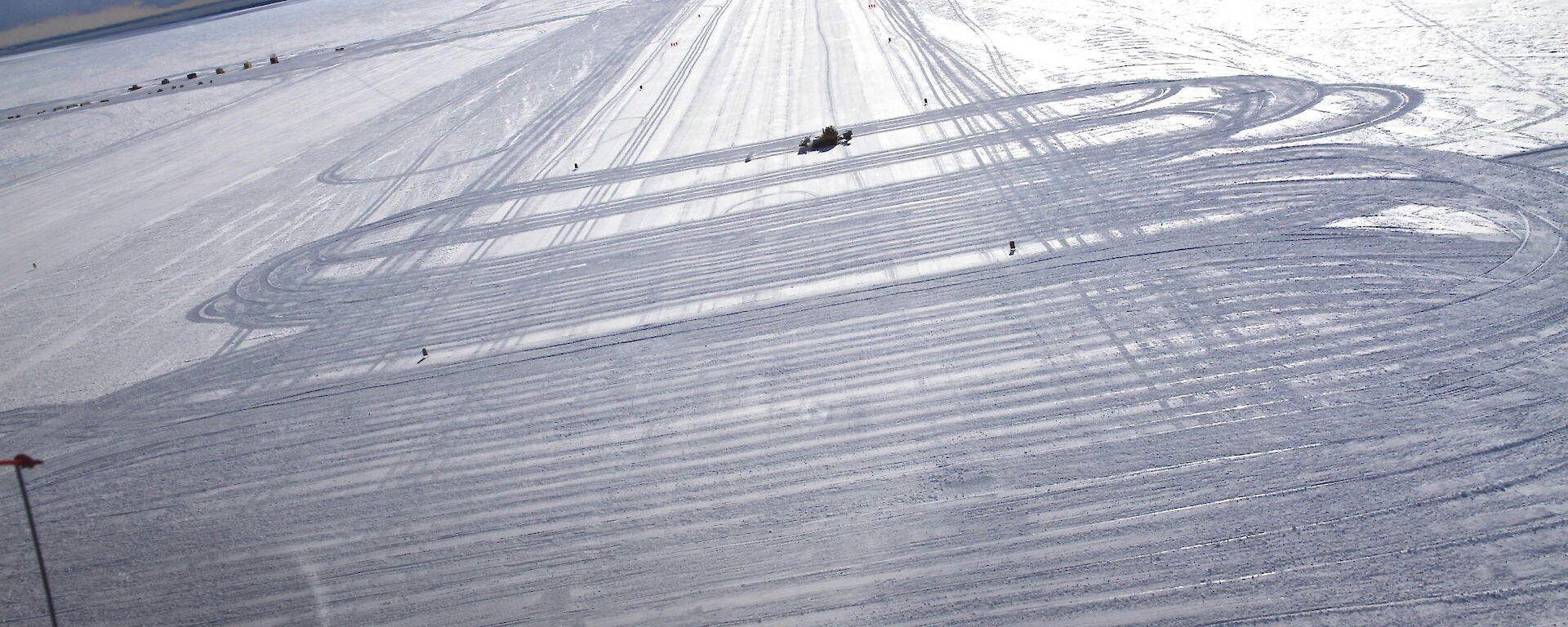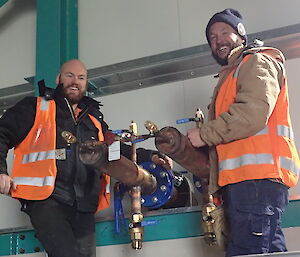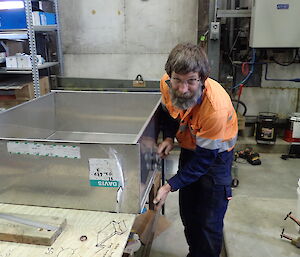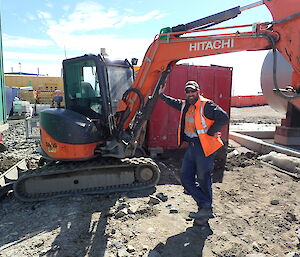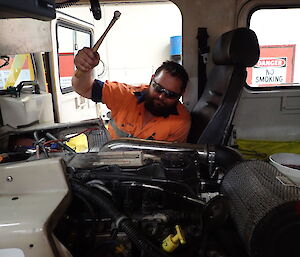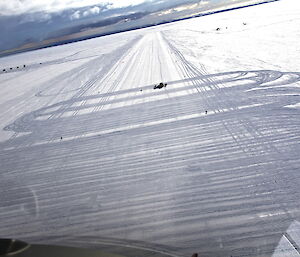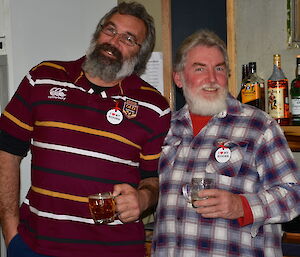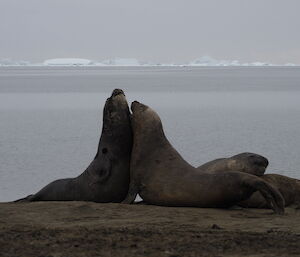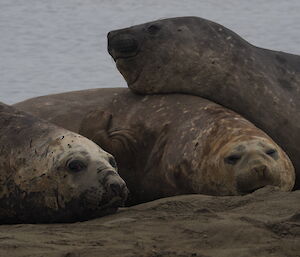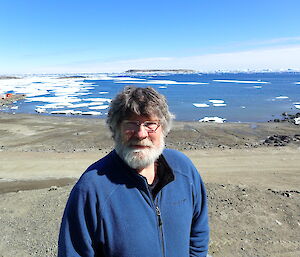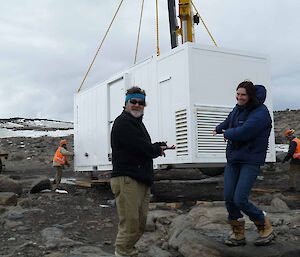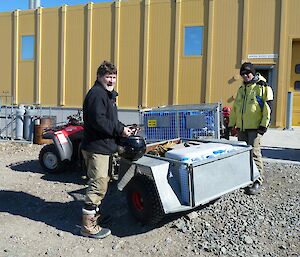With the weather today looking good for flying, it may well be last day on Davis station for one of the Australian Antarctic Division’s longest serving and well loved characters. Along with a number of other expeditioners, Andrew ‘Clobbs’ Davidson is scheduled to leave us after a very successful summer science programme. The principal investigator of a project looking at the effects of ocean acidification on marine microbes, Clobbs has also served as the science supervisor here on station and a member of the station’s management team. He will be dearly missed.
In the words of one of his colleagues: “Clobbs is an extremely hard worker with a very high work ethic, but he also cares a lot about the people he works with and is a great team leader, not to mention fun. He has done a lot for the marine microbial world — always pushing that it is far more important to study communities of microbes and how they interact, rather than looking at the physiology of a single species. The minicosms provide a great way to look at communities and it is a courageous step as the work is much more difficult and time-consuming than more simple experiments. I’m really glad that everything worked so well for him and the team this season.”
Recently, Brendan H. caught up with him for some reflections on his years down south.
Transcript of an interview with Clobbs
You've done a number of trips south during your career, can you tell me how many? And to where?
I've now had the honour of doing 17 trips to Antarctica. Some of these have been marine science trips but most of them have been to Davis. I got into Casey Bay on my first trip south in 1983 aboard the Nella Dan, I've got within about 30 kilometres of Mawson seven times but I've never been ashore at either of these stations. I have however been ashore at Heard Island for a couple of days (a jewel in the Antarctic crown), at Macquarie Island and have been lucky enough to experience some of the further-flung areas around the Vestfolds.
What was your first job/project on the continent?
My first season on the continent was in 1991 at Davis (surprise, surprise). I had just discovered that some phytoplankton species produced starting amounts of sun-screening compounds and had just started a PhD studying the extent to which this protected them from the higher levels of UVB damaging, short wavelength radiation that they were receiving as a result of the ozone hole.
What is your current role?
I am a senior research scientist at the Australian Antarctic Division (AAD). I lead a small team into the study of plankton in the southern ocean. These tiny organisms are paramount to the function of the Antarctic system — eventually all Antarctic life depends on these organisms for food. Being so small they are intimately exposed to a changing ocean and the results of these changes will be felt throughout the biological system. My aim is to better understand the sensitivity of Antarctic life to the changes we humans are imposing, and to contribute to policy outcomes that may protect this extraordinary part of the world.
What are the biggest changes you've seen in the stations/people?
The people who come to Antarctica have changed little. They remain fascinated by the location, adventurous at heart, and committed to having fun and experiencing the world. The station has changed drastically. The accommodation is luxurious, the food sumptuous, the access to outside contact by phone and internet astounding: a far cry from a broom closet in the donga line or a quarter of a 20 foot shipping container to live in, WYSSA telexes once a week and food that could be better deployed for stopping off plaster.
Do you have a favourite station (Ed. Davis obviously!)? What makes it special to you?
The reason that I keep coming back to Davis is two-fold. Firstly it’s a great location with a vast diversity: ocean, lakes, ice, geology. But more importantly for my work it does not have the pollution that immediate waters around Casey suffer, and it also has excellent laboratories that support my rather over-aspirational scientific endeavours.
Tell me about a project or accomplishment that you consider to be the most significant in your career.
I alluded to this above: there is an alga down here that forms balloon-like colonies. It was here again this season filling the water column (and our experiments) with tiny translucent spheres made up of thousands of cells. By sheer luck (read: misadventure) I found that this remarkable single celled plant filled its colonies up with a sunscreen. This sunscreen was much more effective at absorbing damaging, short wavelength, ultraviolet than the stuff we apply to protect ourselves from sunburn. My studies showed that it allowed this particular marine plant to out-compete the other species it grew with under high ultraviolet light. There’s something fascinating about being the only person in the world to understand how parts of the Antarctic system work!
Is there one item that you must have with you each time you're in Antarctica?
First it was my trusty Peterson pipe, then I had my partner here for a couple of summers, now — as a sign of the times — it’s my hearing aids.
What are your plans for the next phase of your career/life?
I have a great deal of science I need to write up. It’s one thing to study a system but you can only change the attitudes of people and the outcome for the region if you convince society and policy makers that there are ways that we can nurture this planet to a better future.
Any words of wisdom for the up and coming scientists hoping to follow in your footsteps?
Do this because it excites you — really blows your hair back! Not because its a job with a good wage and career prospects. If you expect the latter, it’s possible you may be bitterly disappointed.
And feel free to add anything else you would like to.
I just want to thank all you fine folks — the expeditioners of the last 31 years for making my Antarctic experiences so special.

